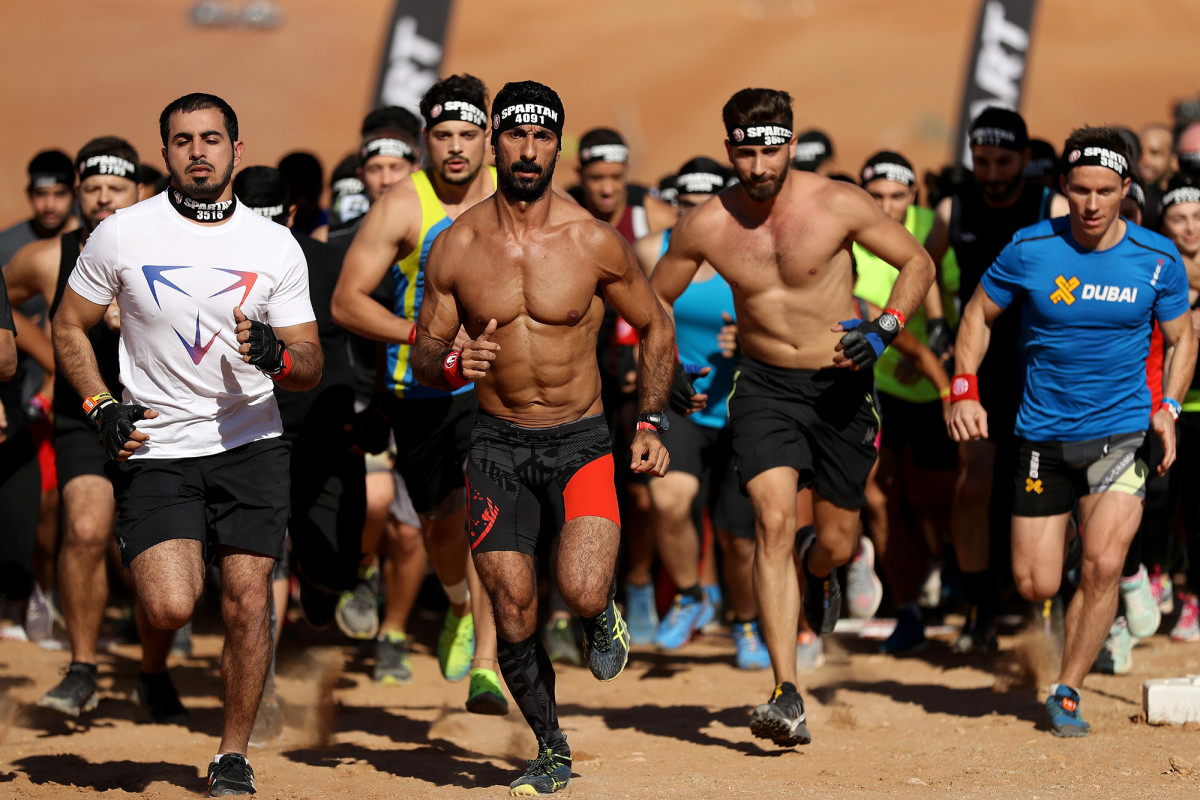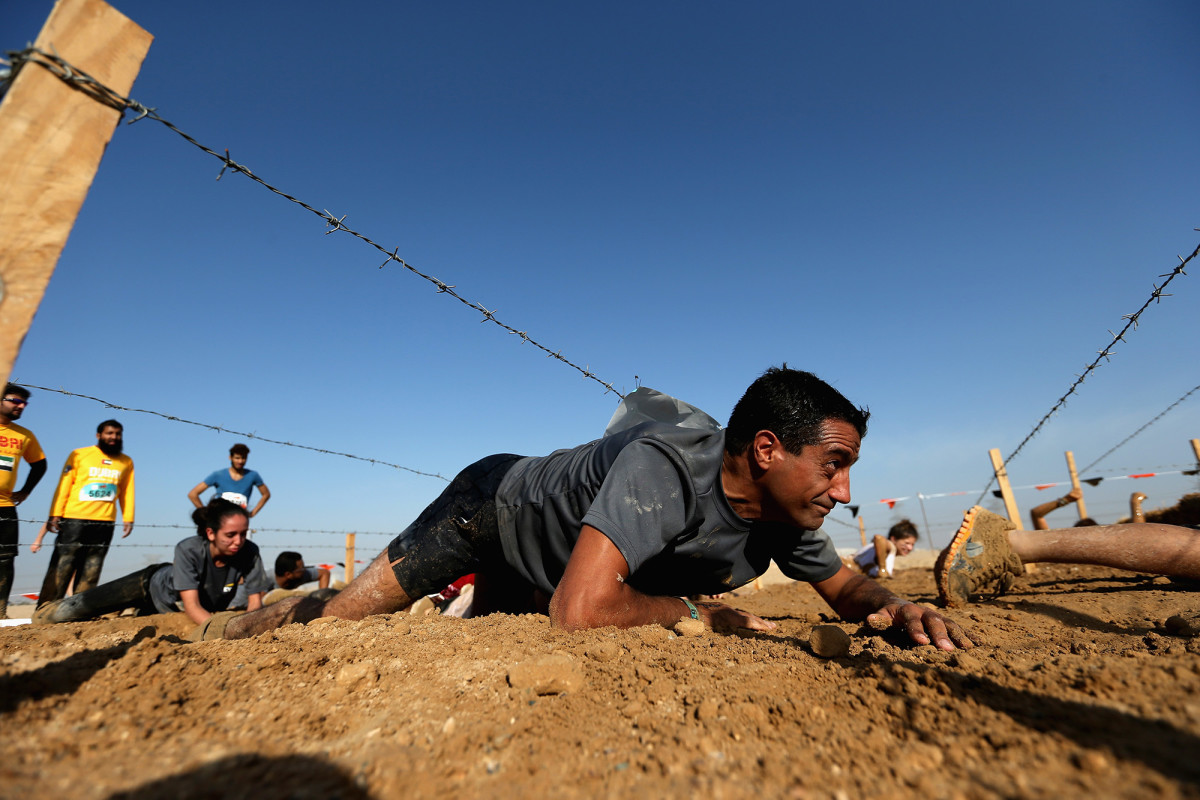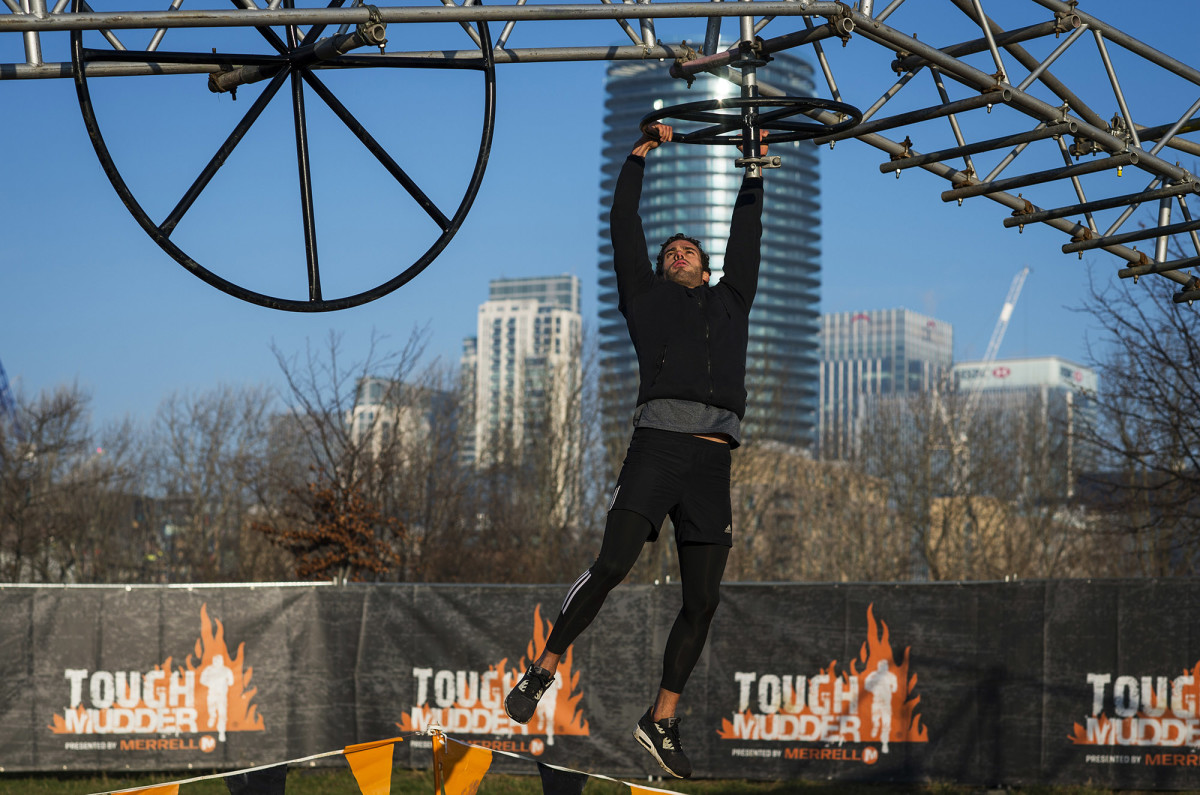Obstacle Course Racing moves one step closer to becoming an Olympic sport

It was one thousand or so steps for a handful of guinea-pig modern pentathletes, but it was one giant leap for the still nascent sport of Obstacle Course Racing.
OCR—your Spartan Races, Tough Mudders, Warrior Dashes, et al—is still in its tender years, particularly when compared to Modern Pentathlon, which proudly traces its roots to the 18th Olympiad in 708 B.C. Back then, the pentathlon was considered the climax of the games, its winner dubbed the “Victor Ludorum,” not to be confused with Victor Hugo or Luden’s cough drops.
But those two sports, the old and the new, came together in a profoundly significant and newsworthy way at a recent UIPM (Union Internationale de Pentathlon Moderne) World Cup competition in Pomona, Calif.

On Feb. 25, in what the UIPM coyly described as “a special race” that took place after the women’s final, a field of volunteer athletes—from both Modern Pentathlon and OCR backgrounds—attacked an actual obstacle course. The newfangled, eyebrow-raising event combined OCR with Modern Pentathlon’s “Laser Run.” In that latter discipline, which is one element in UIPM’s “Mixed Relay”—it’s confusing, I know—athletes run four 800-meter circuits, pausing between each for a session quick session of target shooting with a laser pistol. The “special” surprise awaiting spectators in Pomona was the unprecedented, non-traditional WTF? addition of obstacles to the Laser Run.
Dr. Klaus Schormann, for one, was highly pleased. The successful execution of this demonstration sport in Pomona, said Schormann, president of the UIPM, “is a logical step in the evolution” of “our beloved Olympic Sport of Modern Pentathlon,” and “forms part of a confident application by UIPM for the Mixed Relay to be added to the programme of the Summer Olympic Games in Tokyo in 2020.”
Did you catch that, Spartans, Tough Mudders and other participants in so-called MOB (Mud, Obstacles, Beer) events? Your sport just got much more legit!
True, the demonstration sport we saw in Pomona was more steeplechase than Spartan Race. And while you may not recognize an event with rather modest obstacles—an ordeal without, say, a slippery, inclined wall, or barbed-wire crawl; without mud, for Pete’s sake!—as a genuine Obstacle Course Race, be patient. And thank Thomas Bach.
Best shoes for obstacle races, mud runs, Spartan Races, Tough Mudders and more
It was IOC president Bach, the German executive and ex-Olympic fencer, who came into the job three-and-a-half years ago signaling that he wanted to break some eggs, disrupt the status quo. Following the 2014 unveiling of his Olympic Agenda 2020, a list of 40 recommendations to keep the Games vital and relevant, Bach opened the next IOC Session with a speech that may have struck some in the Olympic movement as vaguely ominous:
“The success of yesterday means nothing for today. The success of today gives you only the opportunity to drive the change for tomorrow…We want to be the leaders of change, not the object of change.”
Or, as Joe DeSena might have paraphrased, “Let’s be the hammer, not the nail.”
DeSena, of course, is the CEO and co-founder of Spartan Race, which will host 170 events this year in more than 30 countries, including 80 in Europe. He doesn’t need a speech from Dr. Bach to know the importance of being the hammer, not the nail. When I spoke with him last month, DeSena was in Japan. He and his family moved to Tokyo two years ago to grow his business in the emerging Asian market.
“The next bunch of Olympics are taking place in Asia,” he explained to Sports Business Daily. All the focus from a sponsorship standpoint, wanting to crack into these markets, is here. It's really logical to be here. Difficult, but logical.”
“There are those that look at things the way they are, and ask why?” noted John F. Kennedy. “I dream of things that never were, and ask why not?”
Train and live like a Spartan with this step-by-step guide by race founder Joe De Sena
DeSena looks at things the way they are, and asks, “What if we built a tower there, dug a moat around it, filled it with frigid water and made racers crawl under barbed-wire to swim the moat while lugging a kettle ball they must then carry to the top of the tower? Ten times.”
Because he is also an “Ask ‘Why not?’” kind of guy, DeSena has long been passionate about getting OCR into the Olympics.
“In 708 B.C., Spartans were admitted to the Games, right?” he asks. (Actually, it was earlier: The dolichos foot race, a new event that year, was won by Akanthos of Sparta in 720 B.C.) Even in those ancient games, which included pentathlon, he notes, “there were some features of present Spartan Race stuff. It just seemed natural to me that this should exist.”

Because one of his governing principles, says the self-effacing DeSena, is “Fire, ready, aim!” he began speaking publicly about his desire to see Obstacle Course Racing in the Olympic program—this before having the remotest idea how that might happen.
“The way I operate is,” he says, “is announce it publicly, and now I’m on the hook.” He made calls. He pushed and advocated. And he got spanked, more than a few times, for his presumption. DeSena, from Howard Beach in Queens, cut his teeth in the business world cleaning pools for mob guys. Olympic traditions are musty and old; Olympic bureaucracies are byzantine and opaque. Informed at one point that he needed to be patient, that his quest might take 40 years, DeSena’s response was: “Well, I’m gonna outlive you. Death is my exit strategy.”
Turns out it’s not going to take 40 years. In the past seven years, OCR has gone from relative obscurity to the No. 1 mass participation sport in the world, according to the USAOCR, “larger than marathons, half marathons and triathlons combined.”
Tough Mudder introduces all-new obstacles for 2017 events
While there may be some debate about how many people are doing OCR events, and whether or not that number is growing—and how fast—this much is sure: It’s a hell of a lot bigger than Modern Pentathlon. Which the UIPM, to its credit, realized. Casting a covetous eye toward OCR, it said: Let’s get a piece of that.
Spartan Race, Tough Mudder and friends have come along at time when Bach and the IOC are looking to infuse fresh energy and relevance (and TV revenues) in the Olympics. The inclusion of obstacles in the Laser Run element of the Mixed Relay at the UIPM World Cup in Pomona is another sign that Obstacle Course Racing is being fast-tracked as an Olympic sport.
“This is not a pebble splashing in a pond,” a highly-placed OCR source told me. “It’s a landslide.”

It’s happening quickly. On March 8, the International Obstacle Sports Federation announced that 1) USA Obstacle Course Racing (USAOCR), has been recognized as the national governing body for obstacle sports and related disciplines in the United States,” and 2) the first OCR US National Championship (international distance) sanctioned by OSF will be none other than the April 30 Spartan Race at Amelia Earhart Park in Hialeah, Fla.
The first iteration, the first taste of OCR in the Olympics—a few obstacles in the Laser Run portion of the Modern Pentathlon’s Mixed Relay—isn’t likely to quicken the pulses of MOB enthusiasts. Again, patience. Once OCR’s muddy foot is in the Olympic door, it can evolve. Another OCR source told me he foresees the sport migrating outdoors, to the Summer Games’ under-utilized mountain biking venue.
Regardless, it’s a big win for a new sport, with DeSena looking a lot like this story’s Victor Ludorum.
